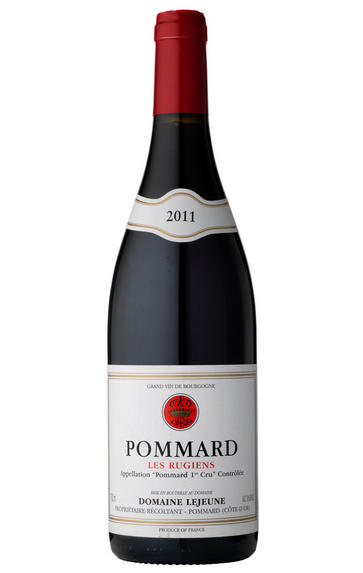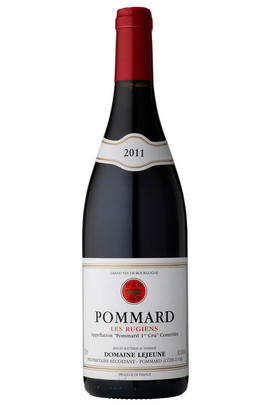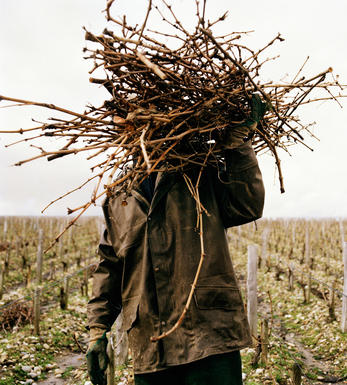
2011 Pommard, Les Rugiens, 1er Cru, Domaine Lejeune

Critics reviews
Neal Martin - 30/11/2014
About this WINE

Domaine Lejeune
This family domaine dates back as far as 1783. For five generations Domaine Lejeune passed from aunt to niece. In 2004 Aubert Lefas took over running the estate from his father-in-law, François Jullien de Pommerol (former oenology professor at Beaune's Lycée Viticole)
Though the domaine is dedicated to whole bunch fermentation, retaining all the stems, the wines show very differently from other such adepts as Domaines de l’Arlot or Dujac. The technique chez Lejeune is as follows: pick a couple of days later on average than their neighbours because whole bunch fermentation requires that the stems be properly ripe; tread by foot in shallow baths about 25% of the grapes and use this to start off a semi-carbonic maceration at the foot of the vats. Then fill them to the top with the remainder of the whole bunches.
After 5 or 6 days start punching down to crush the whole grapes, tackling one sector of the vat each time to release the remaining juice and unfermented sugar slowly. After a total of around twenty days in the vats the skins are pressed, releasing more sugar in the juice, which is then put back into the vats together with the free run juice to complete the alcoholic fermentation. The wine is then sent to barrel where it is kept cool for the first winter to precipitate tartrates. The wines stay in barrel for 18 months after the malolactic fermentation, with 50% new wood for the Rugiens and Grands Epenots, 25 to 35% for the other Pommards.
Principal vineyard holdings:
Pommard 1er Cru Rugiens 0.26ha
Pommard 1er Cru Les Argillières 1.40
Pommard 1er Cru Les Poutures 1.08
Pommard Les Trois Follots 0.87
Jasper Morris MW, Burgundy Wine Director and author of the award-winning Inside Burgundy comprehensive handbook.

Pinot Noir
Pinot Noir is probably the most frustrating, and at times infuriating, wine grape in the world. However when it is successful, it can produce some of the most sublime wines known to man. This thin-skinned grape which grows in small, tight bunches performs well on well-drained, deepish limestone based subsoils as are found on Burgundy's Côte d'Or.
Pinot Noir is more susceptible than other varieties to over cropping - concentration and varietal character disappear rapidly if yields are excessive and yields as little as 25hl/ha are the norm for some climats of the Côte d`Or.
Because of the thinness of the skins, Pinot Noir wines are lighter in colour, body and tannins. However the best wines have grip, complexity and an intensity of fruit seldom found in wine from other grapes. Young Pinot Noir can smell almost sweet, redolent with freshly crushed raspberries, cherries and redcurrants. When mature, the best wines develop a sensuous, silky mouth feel with the fruit flavours deepening and gamey "sous-bois" nuances emerging.
The best examples are still found in Burgundy, although Pinot Noir`s key role in Champagne should not be forgotten. It is grown throughout the world with notable success in the Carneros and Russian River Valley districts of California, and the Martinborough and Central Otago regions of New Zealand.


Buying options
Add to wishlist
Description
Sadly this is a very small cuvee chez Lejeune, but it has a beautiful bouquet, lively yet very graceful. There is a concentrated wealth of fruit on the palate with firm tannins providing a classical Pommard structure. Definitely a keeper.
Jasper Morris MW - Burgundy Wine Director
wine at a glance
Delivery and quality guarantee